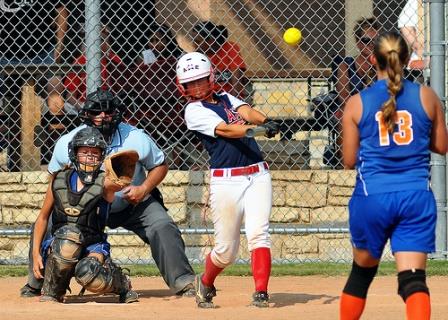The Shortest Distance Between Two Points is a Straight Line
Baseball and softball require the ability not only to run straight ahead but also the ability to run diagonally from point A to point B. The old saying that the shortest distance between two points is a straight line can be the difference between a single, a double and sometimes even a triple. Learning to read the flight of a ball is a great talent and should not be undermined, but the ability to turn and get to the point of the ball is a huge advantage in fielding. In this article we’re going to talk about 3 things you can do to help create a better jump on the ball for outfielders and infielders.
- Overall Mobility – When you’re talking about crossover running or running in a diagonal pattern, hip mobility and strength come into play. Being mobile and flexible has its benefits as we have discussed, but especially the hips in baseball. This type of movement plays a huge role in your lateral speed and the ability of the body to move in a fluid pattern towards the ball.
- Lateral speed training – Working on acceleration in a linear (straight ahead) pattern is great and very, very beneficial to baseball. However, more often than not you will run laterally in a game. You will crossover step and you will turn and sprint. So working on speed work in a lateral way will pay off huge when needed in a game. Also, some drills to consider would be lateral movements to a linear sprint. Here are some examples below:
- Shuffle to sprint – Athlete will shuffle 5 yards, pause and sprint 20 yards. You can also add some reactive movements as well. For instance, shuffle 5 yards, shuffle 2 yards back and go.
- Crossover pause to sprint – Crossover sprinting should not be confused with carioca. We’re just using the front side of the carioca, never trailing the back leg behind. So in this drill you will do 2 crossovers pause and head to a linear sprint of 20 yards.
- Lateral falling starts to sprints – the athlete will be on his/her tiptoes and stand tall, fall and crossover to a sprint. We want to work on getting the head around and focused on the linear sprint.
- Tennis ball drop from a leadoff position – have a partner about 10 yards away with a tennis ball at shoulder height. The athlete will be in a leadoff position. When the partner drops the ball the athlete will react and get the ball before it bounces 2 times.
- Single leg training – All athletes should be doing this. Working on strength training your legs individually has a huge benefit. When you look at crossover running or turning and going for a ball you have to see the transfer from one leg to the next. Training your legs individually will allow a better transfer because of an increase in strength unilaterally. An advantage of unilateral training is that you can see which leg is weaker and needs some more strength. You can manipulate that by changing weights or rep schemes based on your weaker leg.
These 3 things can be implemented right now in your training and will allow you to get from point A to point B faster. Getting to the ball quicker will not only allow you to make better plays but also limit your opponent from stretching a single to a double or preventing a run from scoring.




Leave a Reply
Want to join the discussion?Feel free to contribute!